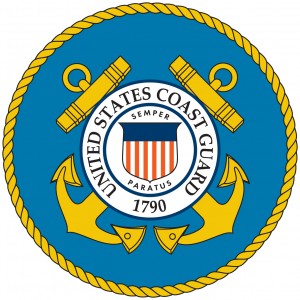 Which federal agency is both a military force and a law enforcement agency? The U.S. Coast Guard (USCG), one of the nation’s five armed forces and the only military organization within the Department of Homeland Security (DHS), “is simultaneously and at all times a military force and federal law enforcement agency dedicated to safety, security, and stewardship missions.” In times of peace, the Coast Guard operates as part of DHS, enforcing federal laws on the high seas, the nation’s coastal waters and its inland waterways; during wartime, or at the direction of the president, it serves under the Navy Department. It also performs missions that are not related to homeland security, including maritime search and rescue, marine environmental protection, fisheries enforcement and aids to navigation.
Which federal agency is both a military force and a law enforcement agency? The U.S. Coast Guard (USCG), one of the nation’s five armed forces and the only military organization within the Department of Homeland Security (DHS), “is simultaneously and at all times a military force and federal law enforcement agency dedicated to safety, security, and stewardship missions.” In times of peace, the Coast Guard operates as part of DHS, enforcing federal laws on the high seas, the nation’s coastal waters and its inland waterways; during wartime, or at the direction of the president, it serves under the Navy Department. It also performs missions that are not related to homeland security, including maritime search and rescue, marine environmental protection, fisheries enforcement and aids to navigation.
One of the oldest organizations within the federal government, the Coast Guard was founded by Alexander Hamilton on August 4, 1790, when the first Congress authorized the construction of ten vessels to enforce federal tariff and trade laws and to prevent smuggling. Known early on as the “revenue cutters,” the Revenue Marine and later the Revenue Cutter Service, it received its present name in 1915, when Congress merged the Revenue Cutter Service with the Life-Saving Service. The Coast Guard began maintaining the nation’s aids to maritime navigation—including operating its lighthouses—when President Franklin Roosevelt transferred the Lighthouse Service to the Coast Guard in 1939. In 1946, Congress permanently transferred the Commerce Department’s Bureau of Marine Inspection and Navigation to the Coast Guard, thereby placing merchant marine licensing and merchant vessel safety within its purview. It was transferred to the Department of Transportation in 1967 and to DHS on March 1, 2003.
The Coast Guard employs some 38,000 active-duty men and women as well as 8,000 reservists, 35,000 auxiliary personnel and more than 6,000 civilians. Congress appears poised to provide the service with more money than the White House requested for next year; while the President asked for $8.32 billion in discretionary funding for the Coast Guard in FY 2013 (3.3 percent below the enacted level for FY 2012), House Republicans unveiled a homeland security budget last week (May 8, 2012) that would give the Coast Guard $10 billion in discretionary funding, an increase of $211.7 million above the president’s request and $63 million below last year’s level, and the Senate appears ready to do the same.
The USCG Headquarters Building, at 2100 Second Street, SW, in Washington D.C., is the organization’s administrative and operational command and control center. A new USCG headquarters currently is under construction on the historic St. Elizabeths West Campus in southeast Washington, D.C.; the project is the first stage of a long-term effort to consolidate DHS facilities on the site. When it is completed in the first quarter in 2013, the new USCG Headquarters will feature an 11-story, 1.2 million-square-foot office building that will house about 3,860 employees, a separate central utility plant, and two seven-story parking garages. (The President’s FY 2013 budget request includes $24.5 million to support the Coast Guard’s relocation to the St. Elizabeths site.)
In addition to the headquarters, the Coast Guard operates facilities throughout the country, including air and shore stations. It is divided into nine regions, with one or more regional offices located in each. The Coast Guard also maintains a surprisingly significant presence in landlocked West Virginia, where the late Sen. Byrd applied his influence to make his state home to the Coast Guard’s National Maritime Center and its Operations Systems Center.

